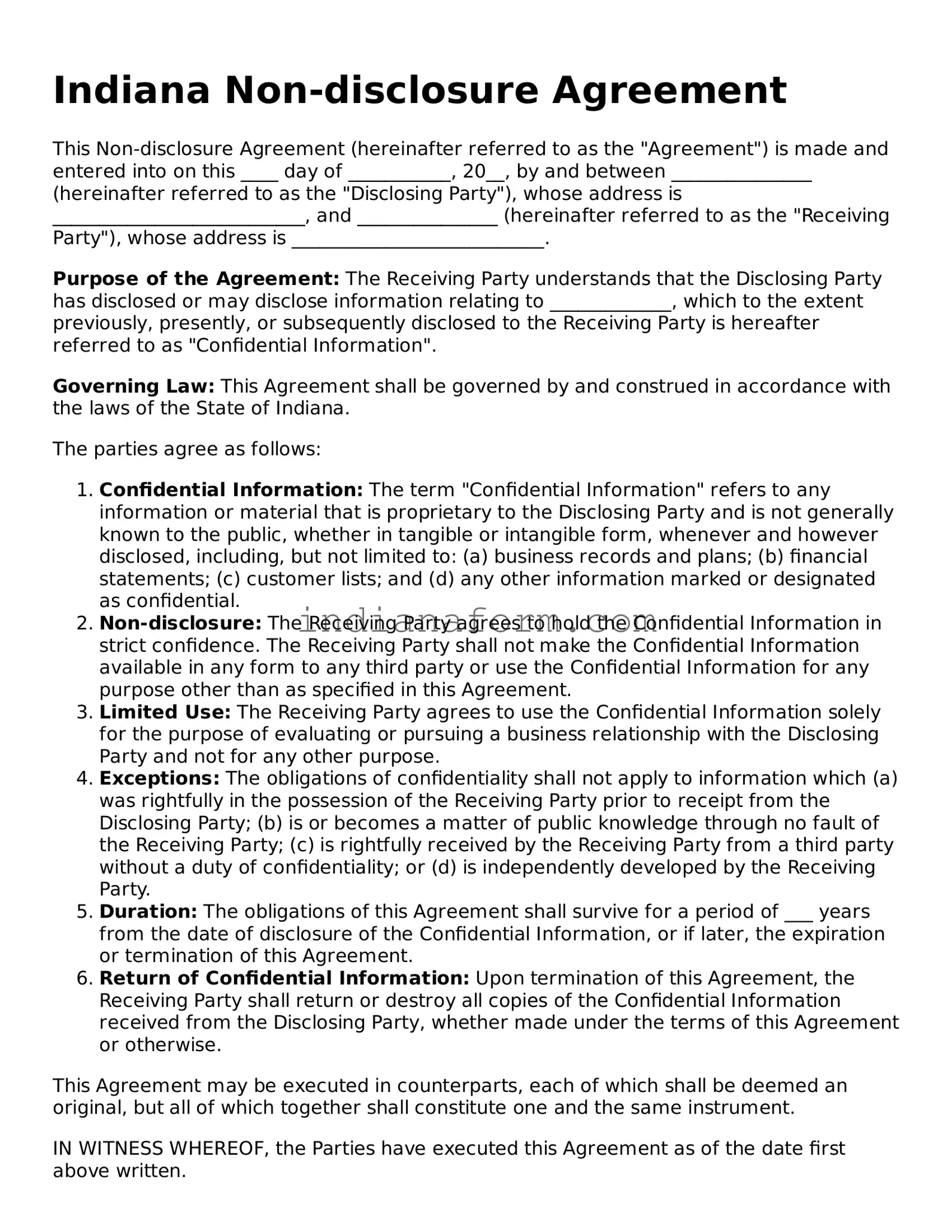What is an Indiana Non-disclosure Agreement?
An Indiana Non-disclosure Agreement (NDA) is a legally binding contract that establishes a confidential relationship between two or more parties. In the context of Indiana, it is used to protect sensitive information from being disclosed without authorization. This form is particularly relevant for businesses or individuals who wish to safeguard trade secrets, proprietary information, or any other confidential data from competitors or the public eye.
Who needs to sign an Indiana Non-disclosure Agreement?
Any party that will be receiving confidential information that needs to be protected should sign an Indiana NDA. This could include employees, contractors, consultants, business partners, or potential investors. It ensures that the receiving party understands their obligations to keep the information confidential and the consequences of not doing so.
What kinds of information can be protected with an NDA in Indiana?
In Indiana, an NDA can protect various types of information deemed confidential. This includes, but is not limited to, trade secrets, business plans, financial records, technical specifications, client lists, and proprietary software. Essentially, any information that gives a business a competitive edge and is not publicly known can be covered under an NDA.
Is an Indiana Non-disclosure Agreement enforcebench?
Yes, an Indiana Non-disclosure Agreement is enforceable, provided it is reasonable in scope, duration, and geographic reach. For enforcement, the agreement must protect legitimate business interests and cannot be overly restrictive such that it limits someone’s right to work or do business. Courts will evaluate the fairness and necessity of the agreement's terms if challenged.
How long does an Indiana Non-disclosure Agreement last?
The duration of an Indiana NDA can vary. It may last for a specified period, such as one or two years, or it may continue indefinitely, especially concerning trade secrets. The parties involved can negotiate the term that best suits their needs, but it must be reasonable. Duration is often defined explicitly within the agreement itself.
Can an Indiana Non-disclosure Agreement be terminated early?
Yes, an Indiana Non-disclosure Agreement can include terms for early termination. Such provisions can specify under what conditions the agreement may be terminated before the end of its term. It is important for both parties to understand these conditions to ensure compliance and address any changes in their business relationship.
What happens if someone violates an Indiana Non-disclosure Agreement?
If an Indiana Non-disclosure Agreement is violated, the non-breaching party has the right to take legal action against the violator. This may involve seeking a court injunction to stop further disclosures and suing for damages caused by the breach. The specific remedies and consequences depend on the terms of the NDA and the nature of the violation.
Do I need a lawyer to create an Indiana Non-disclosure Agreement?
While it is not mandatory to have a lawyer to create an Indiana NDA, consulting with one can be beneficial. A lawyer can help ensure that the agreement is precisely tailored to protect your specific type of information and that it is enforceable under Indiana law. They can also advise on the reasonableness of the agreement's terms to avoid potential legal challenges.
